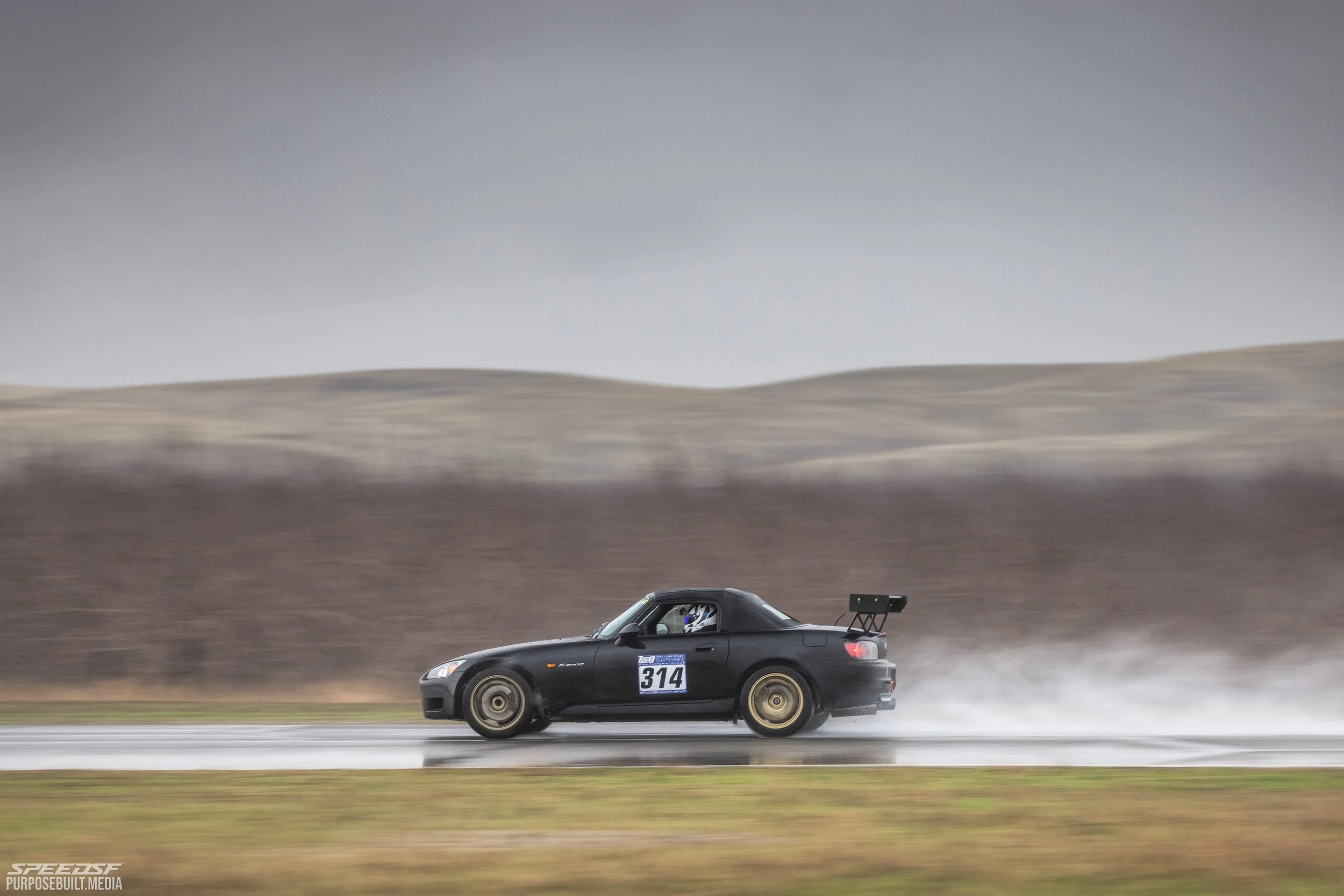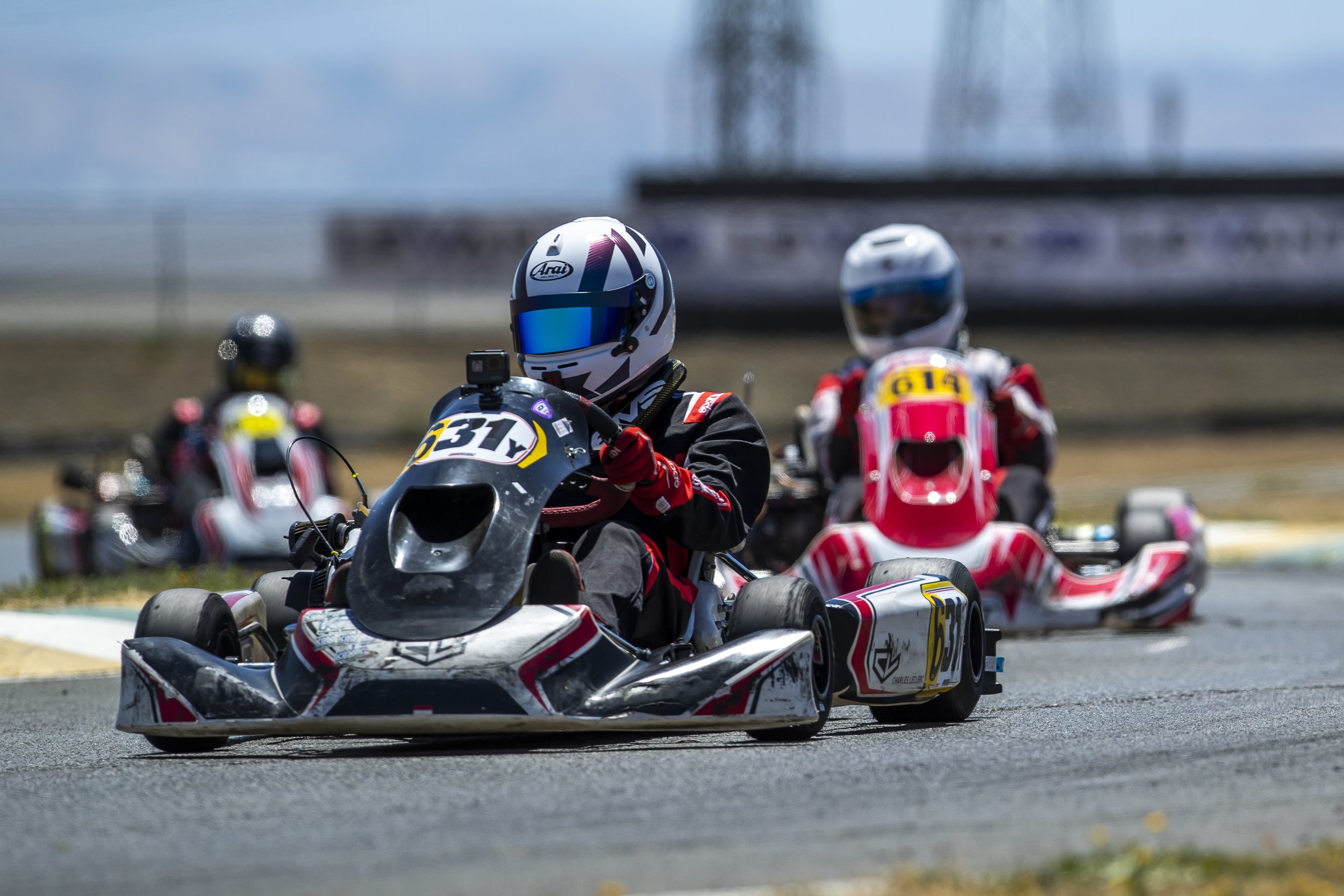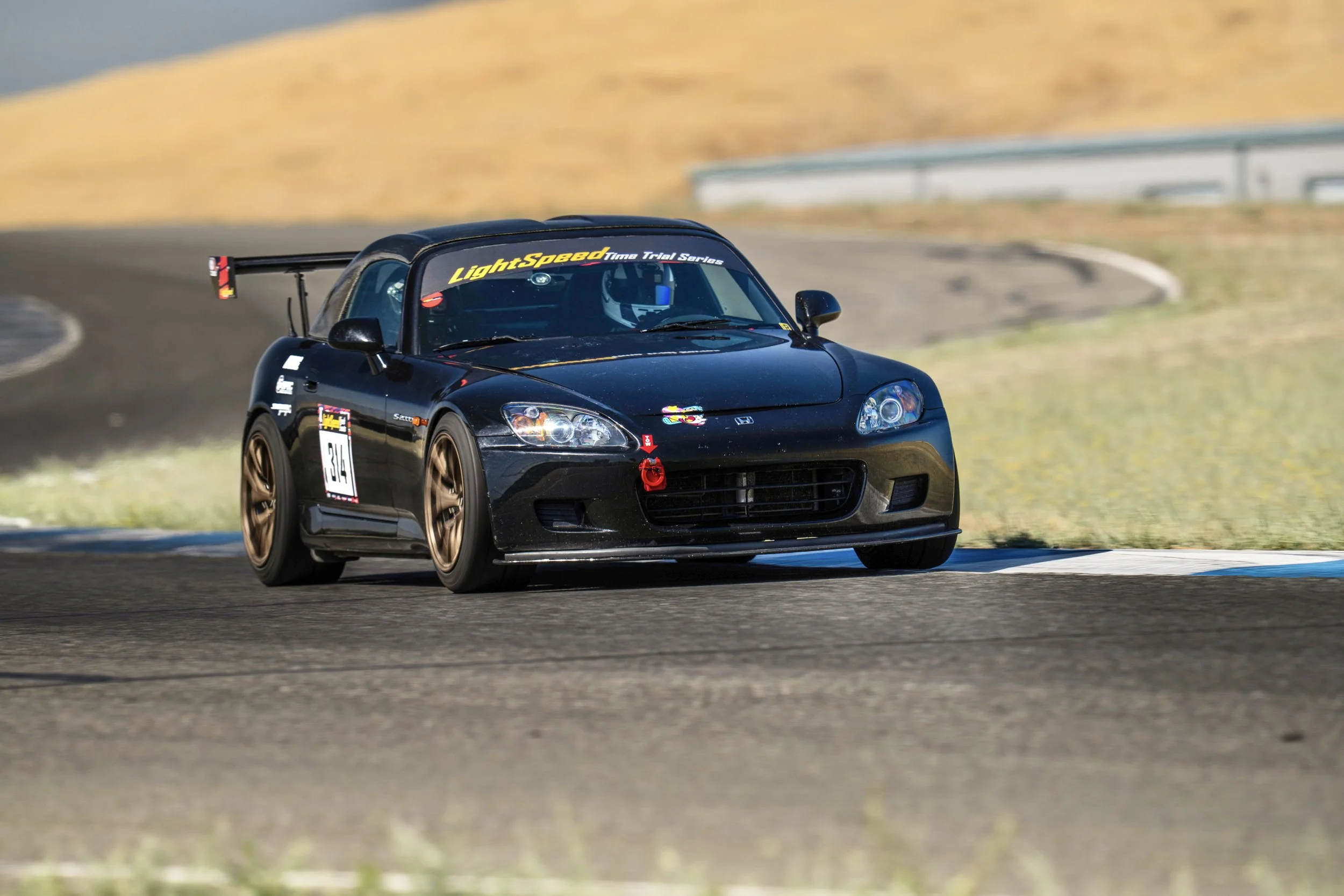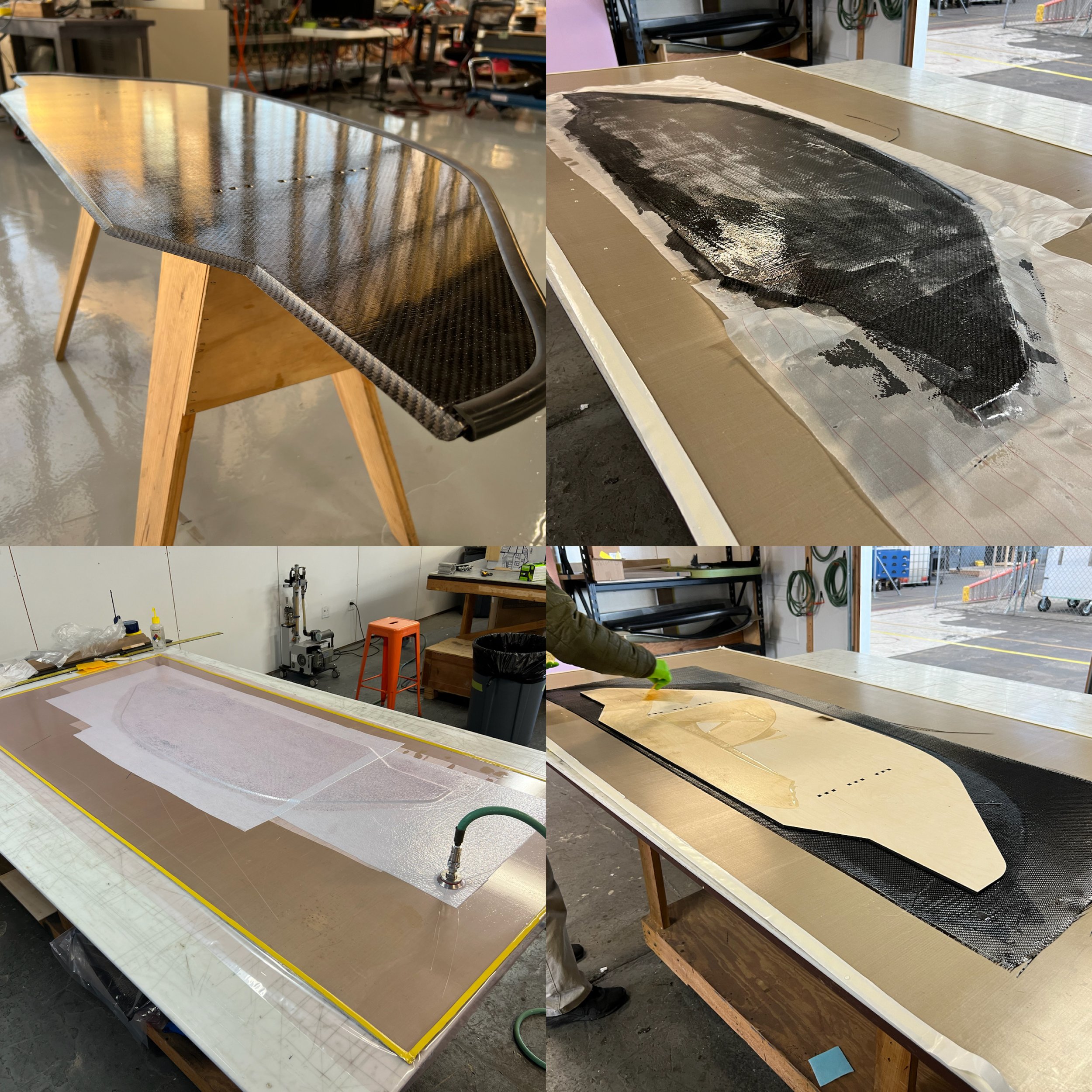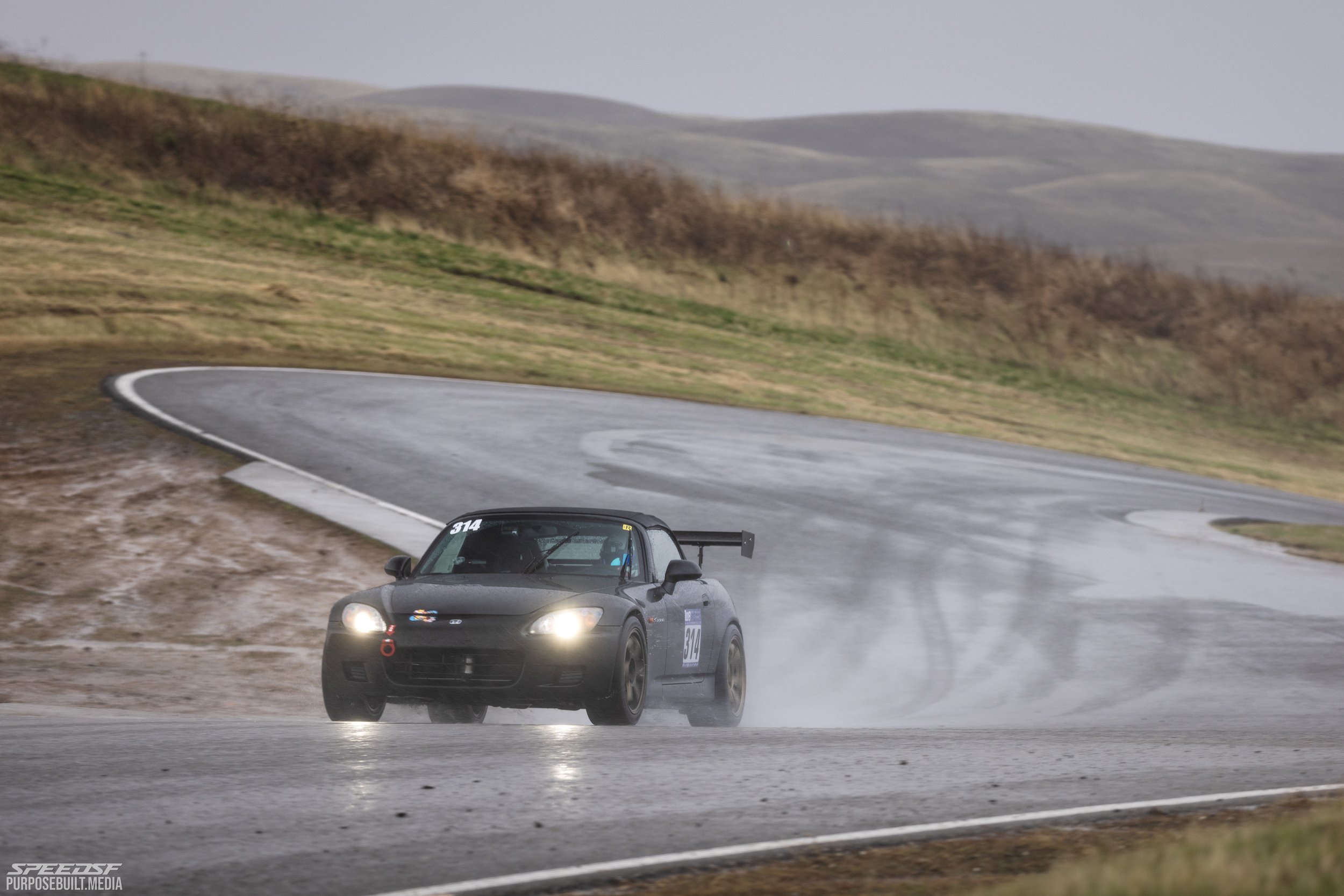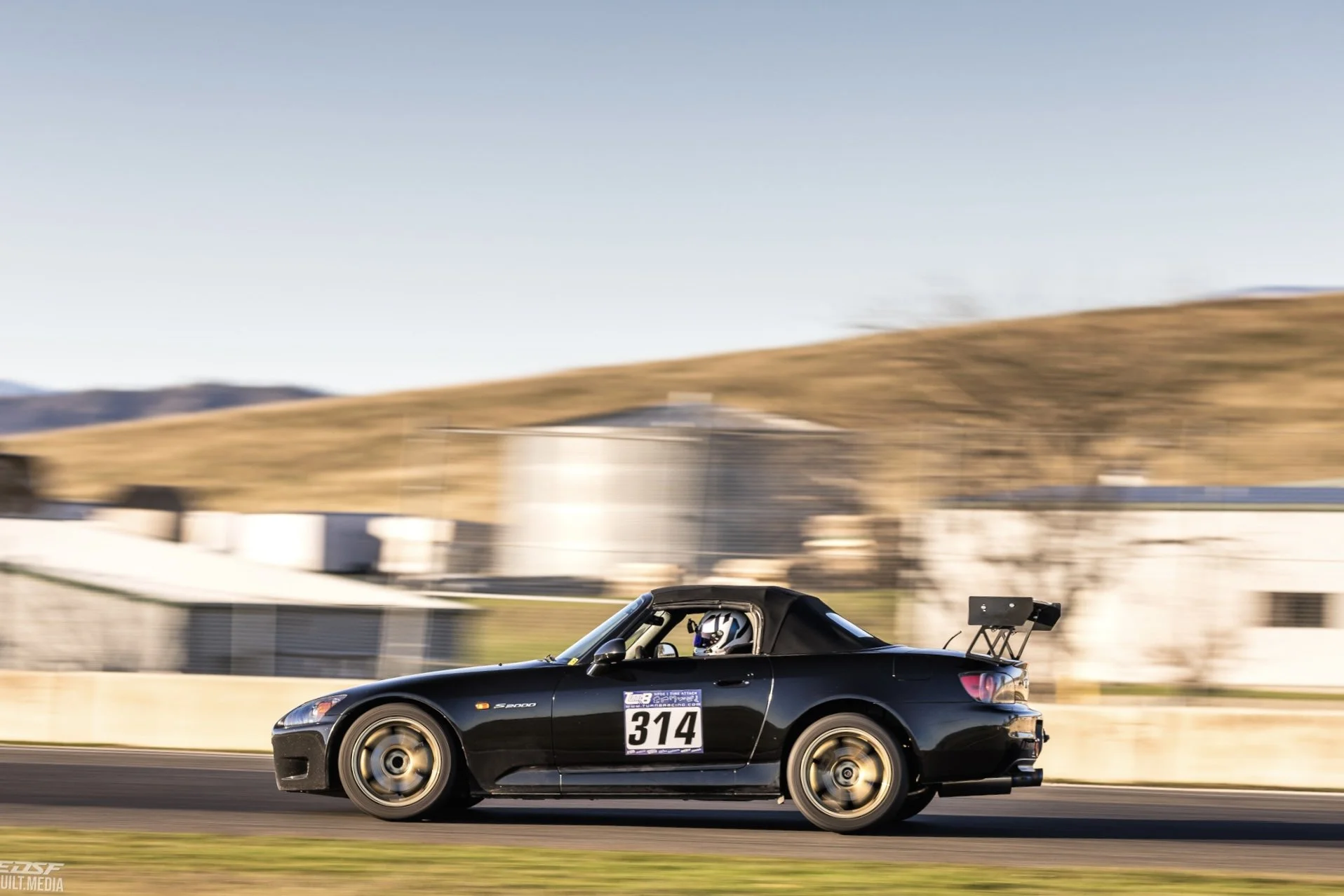Alex’s AP1 S2000: Engineering-Driven Solutions
When Alex Tanaka joined his college’s Formula SAE team as a chassis engineer, he hadn’t yet been initiated into the world of motorsport. This was just another step on his way to his degree, but it proved to be a formative experience that left an indelible mark on him. Two years of dedication paid off when, as a senior, he was given a chance to test the car he’d spent so much time improving.
Suddenly, he found himself stuck in a Yamaha YZ450-powered, Hoosier slick-shod carbon racing car pulling as much as 1.8 G. That, believe it or not, was the first-ever machine he’d ever driven on a track. Understandably, Alex wasn’t quite up to the task yet, as he admitted. “Looking back, I was in way over my head,” he laughed.
Single-Seat Start
That unforgettable experience in a dedicated racing car sent him down the karting route to cut his teeth; racing both in LO206 four-strokes as well as an indoor K1 Speed series, which he won in his first full season. Soon after, he transitioned from karting to a two-ton Tesla Model 3, his daily and his first full-sized track car.
It only took six months before he was topping the timing sheets in local time attack series, but that short time in the Tesla had shown him how costly a heavyweight could be. He realized the way forward would require a different car: something lighter that was kinder to its consumables, and preferably with some of that directness he’d come to love from the single-purpose machines which first piqued his interest.
Few production cars have that sort of adjustability, really. Short of a Lotus Elise, there aren’t many mass-produced cars that feel as alive in one’s hands. Whatever he picked, it would have to look for the qualities he learned to appreciate in his FSAE days.
“For maximum track performance, it's important to have these three traits: lightweight, high rigidity, and low moment of inertia. The S2000 was designed with all of these principles in mind, so it was the most appealing package to me,” he elaborated.
“They were selling it cheap enough to where I felt I’d have enough change left over to fix it when something broke.
However, this one was too cheap to ignore. The former owner, a racer and mechanic of some repute, had treated the car kindly and left it mostly stock. The S2000’s lengthy service records and flawless underside made it easier for Alex to part with the Miata money its former owner was asking for.
If It Ain’t Broke
Part of his frugal approach included doing as much of the maintenance as he could, but he attributes most of his current cost savings to installing modifications only when necessary.
A square set of 17x10” Apex VS5-RS wrapped in 255-section Kumho V730s have given him real performance for reasonable money.
Eventually, he turned to a reputable shop with proven success with S2000s for the first round of notable changes. SakeBomb Garage provided the one-way Ohlins DFV 1-way 12k/14k custom valved coilovers. For brakes, he opted for Girodisc two-piece rotors up front and Urge rear rotors at the rear, all using Project Mu Club Racer pads.
A discount APR GT-250 wing came next, as well as a splitter of his own design. “My job gives me access to most tools I need to make this happen. I made some cardboard cutouts for quick prototyping and then made the actual splitter out of laser-cut 1/4" plywood that was then sandwiched between two layers of wet layup carbon. If the splitter ever breaks, I can easily remake this without breaking the bank,” he explained.
Following that, he installed an HKS Hi-Power exhaust and high-flow cat to extract a few horsepower. No tune, no other power adders, just an exhaust. To keep him in place, he swapped the stock seat for a Sparco bucket, but still hasn’t purchased a harness.
“I think the driving dynamics are perfect for me. It’s really adjustable with some subtle input changes as long as you’re comfortable with the rear moving around. Thanks to the aero balance, it’s not too scary.”
Logging laps on the sim and occasional karting carried Alex to a respectable level of ability in just eighteen months of track driving - knocking on the door of a two-minute lap at Thunderhill Raceway with these modifications proves that. “I’m now trying to get everything out of what I’ve got in the car right now. If something breaks, I’ll fix it, but it’s fast enough. However, one thing that’s been on my mind is routing my own sensors to read throttle, brake, engine speed, and so on. It’ll be tricky since it’s pre-CANBUS, though. The Racebox has been helpful, but there’s only so much it can do. I’m really hoping to deep dive into my data and learn what I can change in my driving.”
Currently, the car’s turning past the 240,000-mile mark and it hasn’t yet stranded him. “It might be one of the highest mileage S2000s on track - in the Bay Area, anyways.”
“In the near future, I plan on attending Global Time Attack and hope to get into wheel to wheel racing next year with SpeedSF. I want to keep improving myself as a driver and continue engineering solutions for the motorsport community,” he said.
Those solutions are currently for sale on etsy. To view Alex’s line of GoPro helmet mounts and S2000 phone brackets, visit Avoeng Motorsports.

